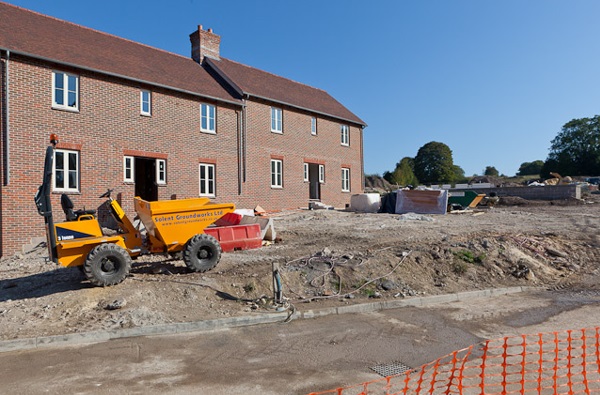Site clearance
The process of site clearance is generally undertaken as part of enabling works, carried out to prepare a site for construction. It involves the clearing the site to allow other remedial, treatment or demolition works to take place before the actual construction works can begin.
It involves clearing a site of any machinery or equipment, unwanted surplus materials, rubbish, and so on. Site clearance may also involve clearing away vegetation and surface soil, and levelling and preparing the ground for the planned construction works. Care should be taken to ensure that there are the correct approvals in place, particularly for trees which may be protected.
A site waste management plan (SWMP) may be prepared before site clearance begins. This describes how materials will be managed efficiently and disposed of legally, explaining how the re-use and recycling of materials will be maximised. All types of waste present on the site must be removed safely and efficiently. If there is any contaminated waste or potentially hazardous substances (such as asbestos), professional disposal experts must be consulted to safely handle them.
For more information, see Site waste management plan.
Site clearance might be carried out as part of the main construction contract, or it may be carried out in advance of the main contract, and might be part of a wider contract including other enabling works or facilitating works, such as; demolition works, soil stabilisation works, services diversion, constructing access roads, and so on.
[edit] Related articles on Designing Buildings Wiki
Featured articles and news
Lighting Industry endorses Blueprint for Electrification
The Lighting Industry Association fully supports the ECA Blueprint as a timely, urgent call to action.
BSRIA Sentinel Clerk of Works Training Case Study
Strengthening expertise to enhance service delivery with integrated cutting-edge industry knowledge.
Impact report from the Supply Chain Sustainability School
Free sustainability skills, training and support delivered to thousands of UK companies to help cut carbon.
The Building Safety Forum at the Installershow 2025
With speakers confirmed for 24 June as part of Building Safety Week.
The UK’s largest air pollution campaign.
Future Homes Standard, now includes solar, but what else?
Will the new standard, due to in the Autumn, go far enough in terms of performance ?
BSRIA Briefing: Cleaner Air, Better tomorrow
A look back at issues relating to inside and outside air quality, discussed during the BSRIA briefing in 2023.
Restoring Abbotsford's hothouse
Bringing the writer Walter Scott's garden to life.
Reflections on the spending review with CIAT.
Retired firefighter cycles world to raise Grenfell funds
Leaving on 14 June 2025 Stephen will raise money for youth and schools through the Grenfell Foundation.
Key points for construction at a glance with industry reactions.
Functionality, visibility and sustainability
The simpler approach to specification.
Architects, architecture, buildings, and inspiration in film
The close ties between makers and the movies, with our long list of suggested viewing.
SELECT three-point plan for action issued to MSPs
Call for Scottish regulation, green skills and recognition of electrotechnical industry as part of a manifesto for Scottish Parliamentary elections.
UCEM becomes the University of the Built Environment
Major milestone in its 106-year history, follows recent merger with London School of Architecture (LSE).
Professional practical experience for Architects in training
The long process to transform the nature of education and professional practical experience in the Architecture profession following recent reports.
A people-first approach to retrofit
Moving away from the destructive paradigm of fabric-first.
New guide for clients launched at Houses of Parliament
'There has never been a more important time for clients to step up and ...ask the right questions'
The impact of recycled slate tiles
Innovation across the decades.
EPC changes for existing buildings
Changes and their context as the new RdSAP methodology comes into use from 15 June.



























Comments